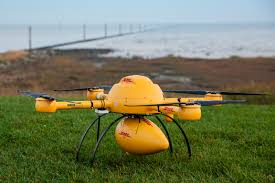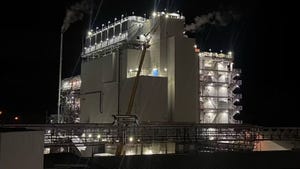Can EMS-Chemie deliver the lightweight solutions needed for high-performance drones?
With its years of experience and in-depth expertise in the area of lightweight solutions and metal replacement, Switzerland-based producer and supplier of polymers and chemicals EMS-Chemie Holding AG (Domat/Ems), has long been an important partner to the automotive industry. Named ''Supplier of the Year'' for the fifth year in succession by General Motors, the company’s high-performance polyamides have, over time, proven their worth in terms of cost, weight and design benefits.
February 11, 2016

Now, EMS-Chemie is eyeing a new area in which this expertise could come in useful: in an interview in Zurich, Chief Executive Officer Magdalena Martullo-Blocher said the company was turning its attention to the rapidly expanding market for commercial drones and its need for lightweight and robust materials to make chassis and other parts, reported Bloomberg’s Alice Baghdjian.
Industry research firm IBISWorld has estimated that the U.S. drone manufacturing industry was already worth $3.5 billion in 2015, largely thanks to defense spending. While the market for unmanned aerial vehicles, as drones are officially known, is expanding—by 20% each year, according to Ems-Chemie, growth is expected to soar when the Federal Aviation Administration clarifies the rules for the use of commercial drones. Currently, the FAA authorizes the use of UAVs for commercial or business purposes on a case-by-case basis, but an official commercial use policy announcement is expected by summer 2016. Similarly, in Europe, new rules for the use of drones—commercial and otherwise—will be developed, or existing ones will be amended in 2016 and 2017, within the framework described in the Technical Opinion published by the European Aviation Safety Agency in December 2015.
Drones are already being used for everything from delivering parcels to oil-rig inspections and mapping applications to humanitarian uses, such the transport of medical goods in rural areas. A recent development still being tested is the use of drones as “emission sniffers” to aid in policing ship emissions in the English Channel, the North Sea, the Baltic Sea and the Gulf of Bothnia, between Sweden and Finland. Ships in these waters may emit fumes with a sulfur content of no more than 0.1%. The drones fly through a ship’s exhaust plume to measure sulfur level of the emissions.
According to EMS-Chemie, there are about five million drones or unmanned aerial vehicles worldwide, but, said Martullo-Blocher: “This is just the beginning. We won’t dive in and deploy five million drones, but a million to two million would be of interest to us. We are monitoring how things develop.”
She added: “It’s still difficult to say how big the market will be, but we have made a start and the potential is there.”
About the Author(s)
You May Also Like


